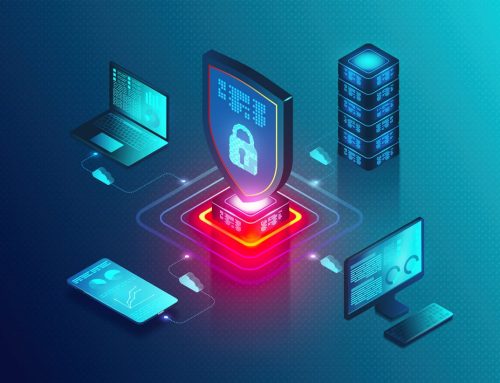SCIF security stands as the bedrock for safeguarding sensitive government information, discussions, and operations. These facilities, specifically designed to prevent unauthorized access and eavesdropping, ensure that classified information remains confidential.
As technology continues to advance, so does the need to enhance security measures within SCIFs. In the ever-evolving landscape of security challenges, one emerging concern is the potential threat posed by unauthorized devices within these facilities.
What is a SCIF?
A SCIF, which stands for Secure Compartmented Information Facility, is a highly secure and controlled environment designed for handling classified or sensitive information. SCIFs are used by government agencies, military organizations, and other entities that deal with classified information to protect sensitive data.
The primary purpose of a SCIF is to create a secure space where individuals can discuss, handle, and process classified information without the risk of unauthorized access, eavesdropping, or information leaks. Because of the high security needed for a SCIF, they have strict safety measures to prevent any compromise of classified information.
Access to SCIFs is usually restricted to individuals with the necessary security clearances, and entry and exit are closely monitored. The facilities often include features such as secure communication systems, soundproofing, access controls, and protection against electronic surveillance to maintain a high level of security.
SCIF Security: A Guide to Regulatory Standards

SCIF security begins with strict adherence to regulatory standards. Designed to protect sensitive government information, discussions, and operations, SCIFs must employ a comprehensive security framework comprising physical, technical, and procedural measures.
Physical Security Measures
At the core of SCIF security are physical measures that protect the facility against unauthorized access and external threats. Access control systems, reinforced doors, and secure perimeters create barriers, allowing only authorized personnel to enter.
Biometric authentication, surveillance cameras, and intrusion detection systems further enhance physical security. The construction and layout of SCIFs also align with regulatory guidelines to minimize vulnerabilities, ensuring that the physical structure itself becomes an integral part of the overall security framework.
Technical Security Measures
The technological backbone of SCIF security involves cutting-edge measures to prevent electronic eavesdropping and unauthorized data access. Encryption protocols, secure communication channels, and firewalls safeguard the digital realm within the facility.
Counter-surveillance measures, such as signal isolation and protected networks, help to reinforce SCIFs against cyber threats. Regular technology assessments and updates are essential to ensuring that the technical safeguards evolve to counter emerging security challenges in the ever-changing landscape of digital threats.
Procedural Security Measures
The human element is equally critical in SCIF security, and procedural measures play an important role in ensuring quality security. Strict access control policies, personnel background checks, and comprehensive training programs all add up to a security-conscious culture within the facility.
Regular security audits and drills help maintain a state of preparedness among staff. This reinforces the importance of adhering to established protocols, helping to minimize the risk of insider threats and ensuring a holistic defense against potential breaches.
How Cell Phones and Other Devices can Threaten SCIF Security

Despite the security measures put in place for SCIFs, improvements in technology have made it easier than ever to sneak in cell phones or other authorized devices like hidden body cameras , putting national data at risk.
Unauthorized Communication
Cell phones enable individuals to easily communicate with external people, creating the potential for leaking classified information. This could be through calls, text messages, or other digital avenues, allowing sensitive information to be transmitted outside the SCIF.
Secret Recording
Most modern smartphones are equipped with high-quality cameras and audio recording capabilities. Unauthorized recording of classified discussions or documents within the SCIF can lead to the compromise of sensitive information. This poses a serious threat to the confidentiality of classified operations.
Location Tracking
Smartphones often have GPS capabilities, and even when not in use, they may still transmit location data. This poses a security risk by potentially revealing the physical location of the SCIF or the movements of individuals with access to sensitive information.
Comprised data
Cell phones, when brought into the SCIF environment, pose a risk of introducing malware that could compromise sensitive data. Malicious applications or malware-laden attachments could be inadvertently introduced, creating a potential avenue for unauthorized access to classified information.
Integrating Technology and Protocols for Stronger SCIF Security
Recognizing the substantial threat posed by cell phones and hidden devices, SCIF security must continually evolve to counter potential risks. Despite strict regulations, the persistent potential for unauthorized communication and information leakage necessitates the integration of cutting-edge technology and reinforced protocols to fortify SCIF security.
Detection Technologies
To proactively address the threat of unauthorized devices within SCIFs, advanced detection technologies stand as a crucial line of defense. These systems employ multifaceted methods, such as radio frequency (RF) signal analysis and infrared sensors, to identify active cell phones and promptly alert security personnel to potential breaches.
RF signal analysis enables the monitoring and detection of cellular transmissions, ensuring that any unauthorized communication attempts are quickly identified. Infrared sensors add an additional layer by detecting heat signatures associated with electronic devices, contributing to a comprehensive and sophisticated detection infrastructure. By integrating these technologies, SCIF security can respond rapidly to potential threats, minimizing the risk of information leakage and unauthorized communication.
Strict Protocols and Procedures
While technological solutions form a formidable defense, the human element remains pivotal in the overall security strategy of SCIFs. Stringent protocols and procedures establish a disciplined framework that complements the capabilities of detection technologies. Regular audits and assessments are integral components, systematically identifying vulnerabilities and areas for improvement.
These evaluations not only ensure compliance with regulatory standards but also facilitate continuous enhancement of security measures. Rigorous entry protocols, personnel training, and ongoing education programs create a culture of security awareness, empowering staff to actively contribute to the safeguarding of classified information.
By seamlessly integrating technology with robust protocols, SCIF security becomes a dynamic and adaptive system, resilient against emerging threats and committed to the perpetual enhancement of its protective capabilities.
Elevating SCIF Security with Mobile Phone Detection

Elevating SCIF security with mobile phone detection, like that offered through Cellbusters Zone Protector, represents more than a response to existing threats—it symbolizes a commitment to staying ahead of potential security challenges. In embracing innovation, SCIFs equipped with advanced mobile phone detection technologies ensure the confidentiality and integrity of classified government operations.







